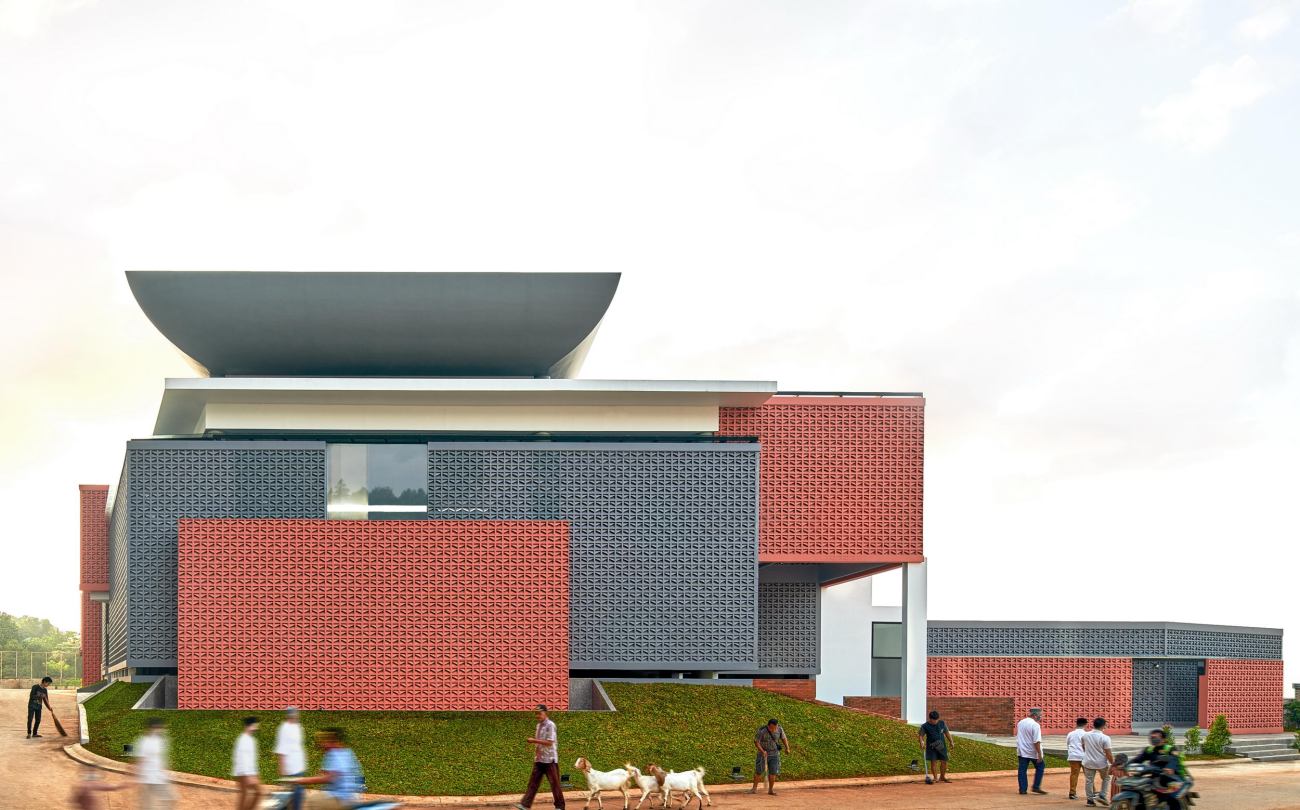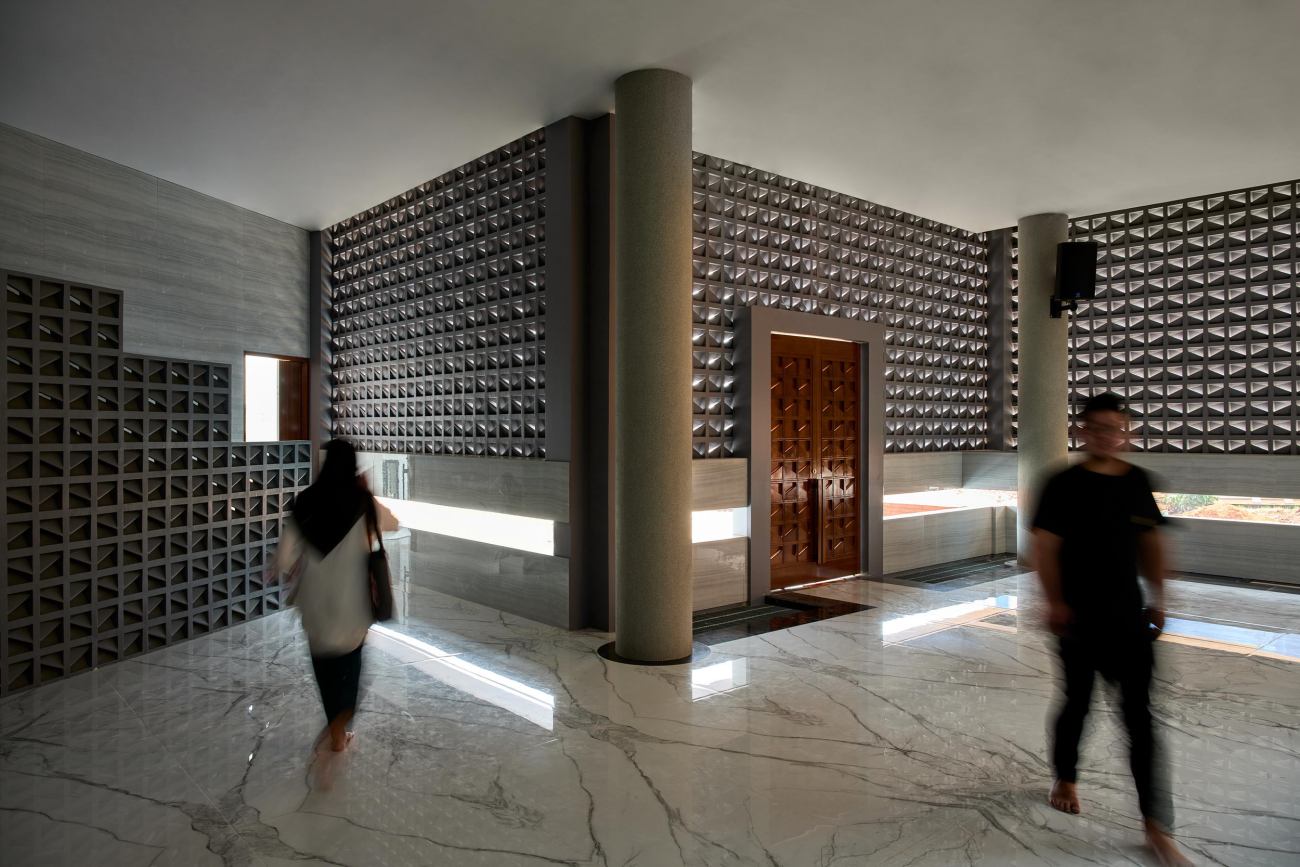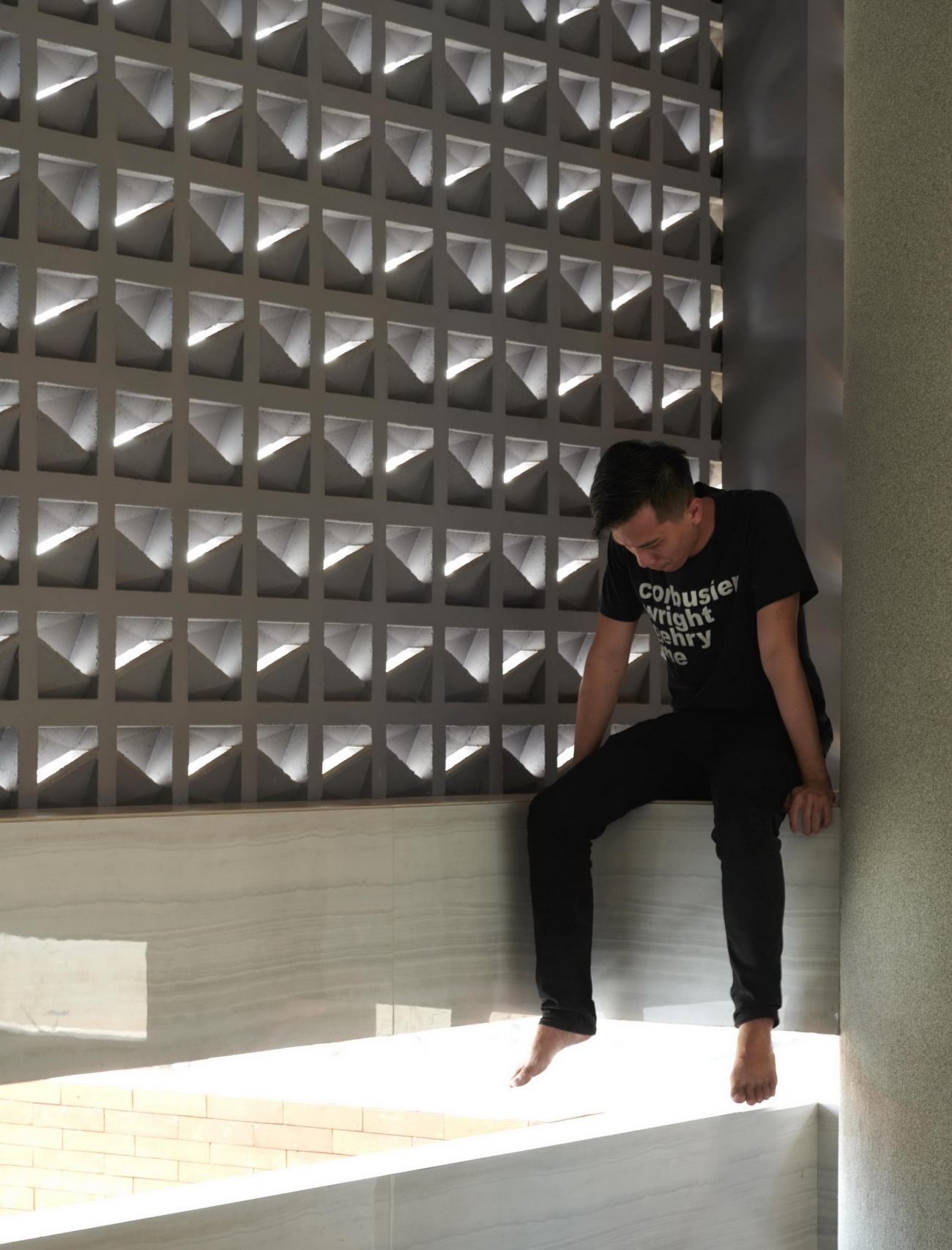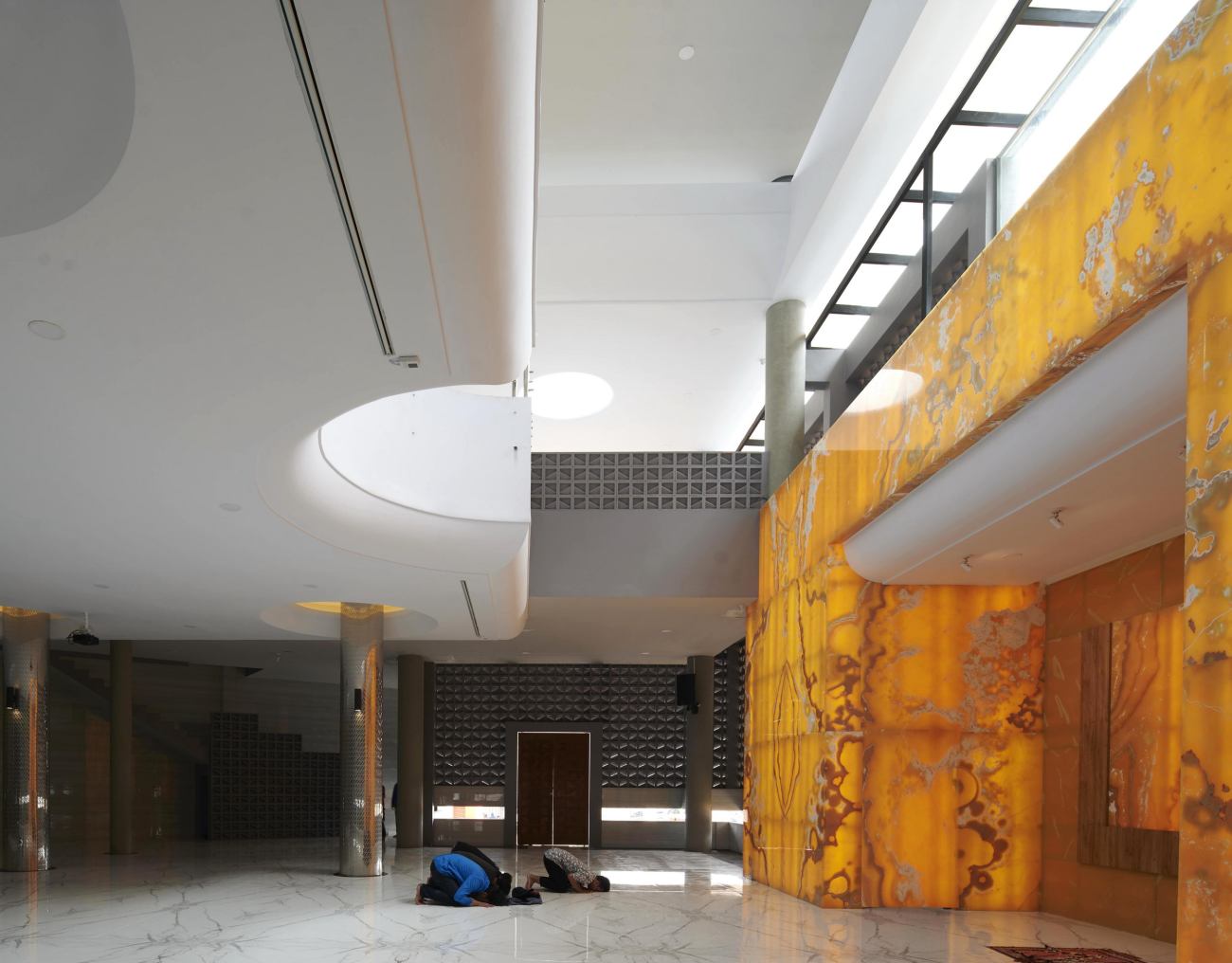与大多数宗教场所不同,清真寺不仅仅是穆斯林的礼拜场所,它通常作为一个社区中心、聚会场所,甚至对一些发展中国家来说,清真也是他们的娱乐空间。设计旨在通过背离当前基于形式的建筑体系,仅关注宗教空间的本质,来解决设计清真寺的基本问题。
A mosque, unlike most religious places, has purposes that was more than just a place of worship for Muslims, oftentimes, it took shape as a community center, meeting place, even for some developing country, a recreational space. Bioclimatic Community Mosque aims to address the fundamental issues of designing a mosque by distancing itself from the current architectural discussions based on form and focusing solely on the essence of religious space.
项目位于年轻人社区中心,清真寺采用低维护成本和自给自足的设计,以应对高温高湿的不友好气候。为此,团队采用生物气候设计,利用太阳能供给12小时的间接自然采光,以及清真寺的大部分相关环境资源,平衡室内外人体热舒适性,精细的交叉通风技术(包含出入口的变化,镂空花砖的使用,以及侧面和顶部设置开窗)。
Situated in the middle of young demographic community, Masjid DarulUlumPamulang were designed to be very low maintenance and self-sufficient as the extremely unfriendly environment where direct heat and high humidity were very dominant. Bioclimatic design was an obvious direction to adopt that utilizes it’s extreme lumen from solar energy as 12 hours indirect natural lighting toward the bulks of the mosque and other related environmental resources to provide indoor and outdoor human thermal comfort, such as detailed technique for cross ventilation (inlet-outlet variation, usage of roster, side and top shaded opening for stack effects).
▽交叉通风技术
▽镂空花砖细节
为了降低社区清真寺的成本,提高效率,建筑师决定更换95%的砖砌隔断,并用3万多块由当地社区手工制作的镂空花砖取代,它们既可以保证隐私,同时还能有利于自然光照和通风。
As an effort to reduce cost for community mosque and increasing efficiency, architects decided to replace 95% of what were supposed to be brick partition and replaced it with more than 30.000 pieces of accustomed roster block ( that provides lights and wind tunnel while maintaining privacy) that were manually manufactured by the local community for the community.
▽3万多块镂空花砖布满整座建筑
建筑师采用基本的几何体积法,将下沉的体量堆叠在另一个之上,利用其较低的温度使风加速穿过建筑物,提供阴影、高热压和气压差,以产生烟囱效应,确保建筑24小时交叉通风。
Basic geometric-volumetric approach as the sunken massing (to harness lower temperature) stacked on top of another, this allowed many level of wind speed variation crossing the building that provides total shade and extreme temperature and air pressure differences that ensure 24 hours cross ventilation & thermal chimney effect.
设计用活跃的绿色屋顶取代了清真寺标志性的伊斯兰圆顶,用以降温并减少对周围环境造成的热岛效应。这被视为在后现代背景下重新定义伊斯兰空间的运动,并根据习惯的必要性。
Design replace the iconic Islamic dome (which mostly a quintessential characteristic of mosques) with a plate of active greenroof to cool down top most plates and to reduce enormous urban heat island contributed to the surrounding environment. This were viewed as a movement to redefining Islamic spaces in postmodern context and needs based on accustomed necessity.
这座清真寺可容纳约1000人,其设计还融合了自然和当地文化。室内与室外阴凉处一样凉爽,并且风速变化对于解决新冠疫情在室内大型聚集的空气传播问题非常有效。
With a capacity to accommodate approximately 1,000 people, the mosque is also designed to blend with nature and local culture. As the interior space were basically a shaded outdoor space, wind speed were varies, this was found to be quite effective to tackle the problem of large gathering indoor during airborne pandemic such Covid-19 that happened recently.
▽祷告室
 | 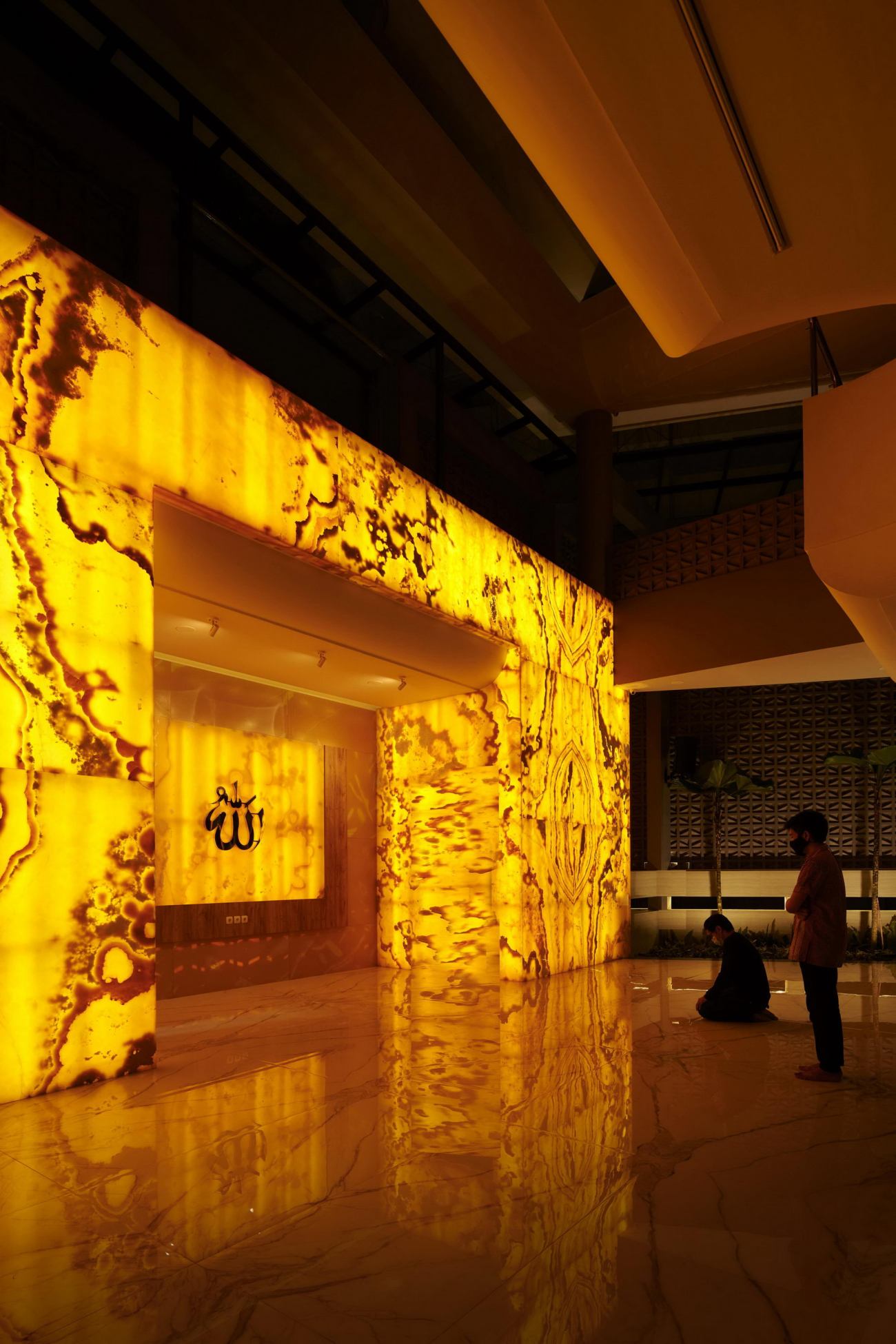 |
▽带有天窗的二层
▽平面图
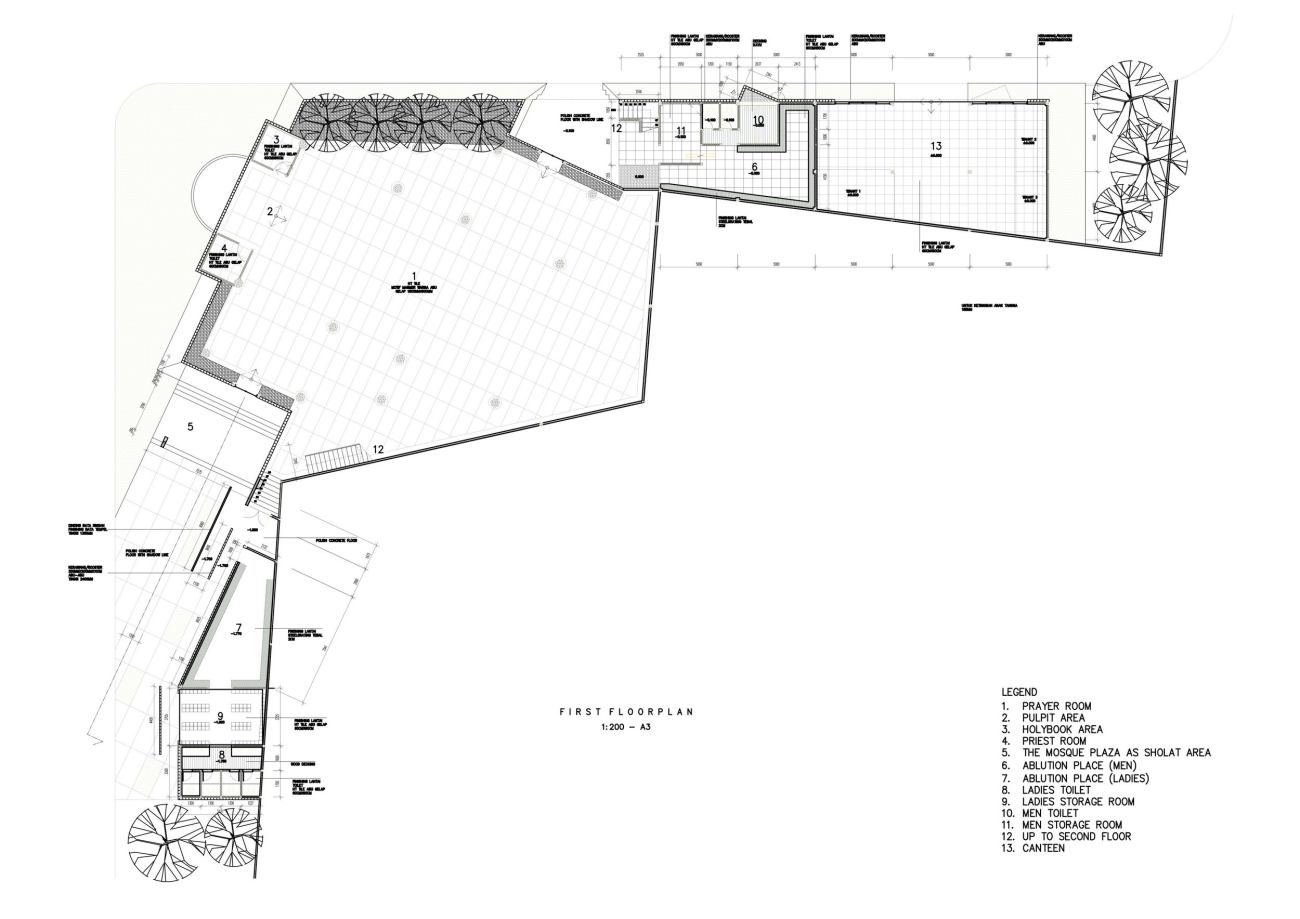 |  |
▽剖面图
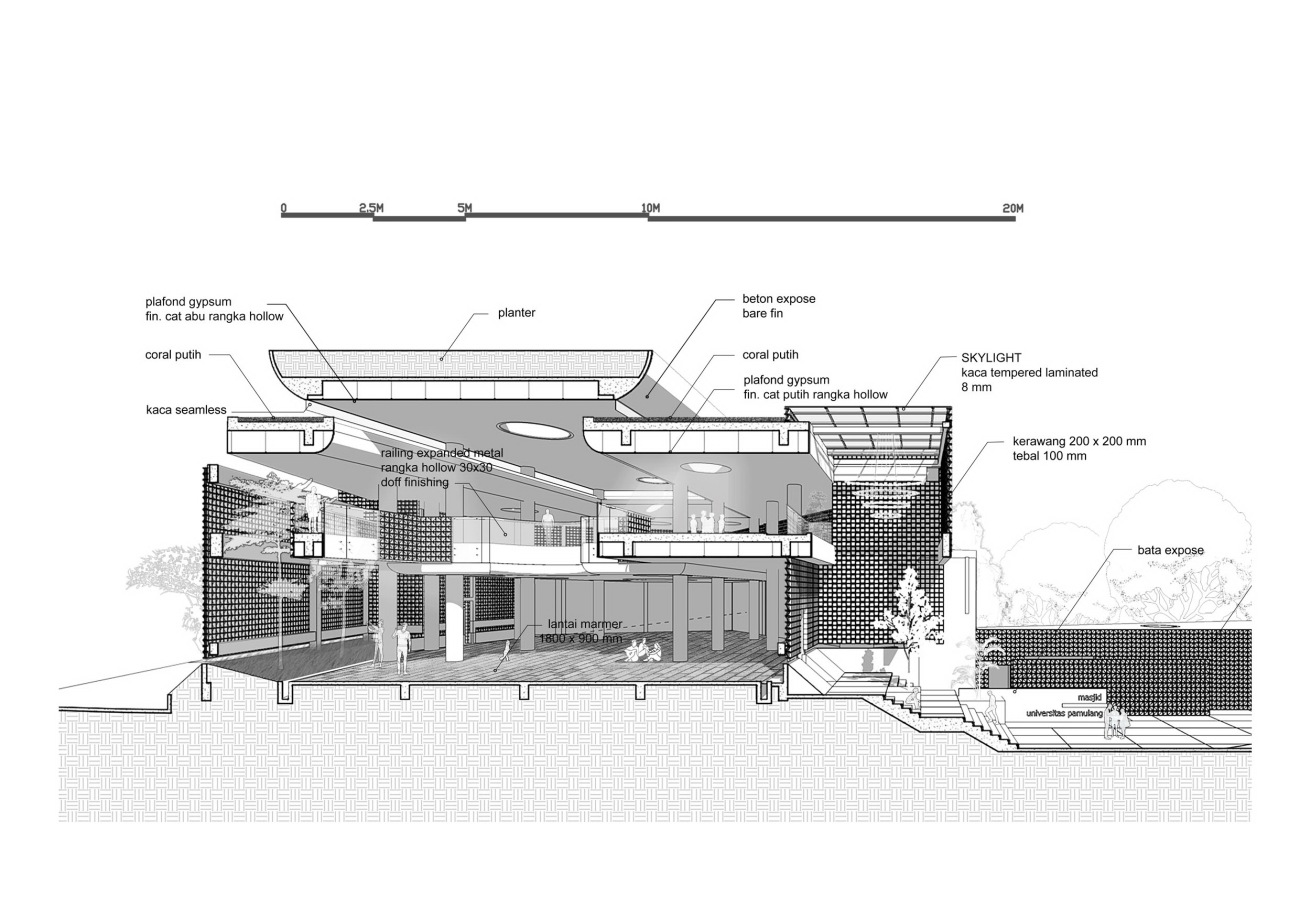 |  |
Project Name:
Bioclimatic
Community Mosque of Pamulang
Architecture Firm:
RAD+ar (Research Artistic Design + architecture)
Website:
www.radarchitecture.net
Contact e-mail:
project@radarchitecture.net ; radarchitecture.studio@gmail.com
Firm Location:
Jakarta , Indonesia
Completion Year: 2020
Gross Built Area: 1200 sqm
Project location:
Pamulang, Tanggerang Selatan, Indonesia
Lead Architects:
Antonius Richard
Lead Architects e-mail:
Antoniusrichard@radarchitecture.net ; arichardrusli@gmail.com
Photo credits: William Sutanto
Photographer’s website: www.artipictures.com
Photographer’s e-mail: info@artipictures.com
Design Team:
PartogiPandiangan, Leviandri, Howard Benaya, FeldaZakri, Daniel Soesanto
Clients:YayasanSasmita Jaya / Dr.H. Darsono
Engineering: PT Kaliabang Jaya Pratama
Landscape: RAD+ar
Consultants: PT Kaliabang Jaya Pratama
Collaborators: HandriWinata
更新日期:2022-05-24 15:01:45
非常感谢 RAD+ar 带来的精彩项目, 查阅更多Appreciations towards RAD+ar for sharing wonderful work on hhlloo. Click to see more works!
